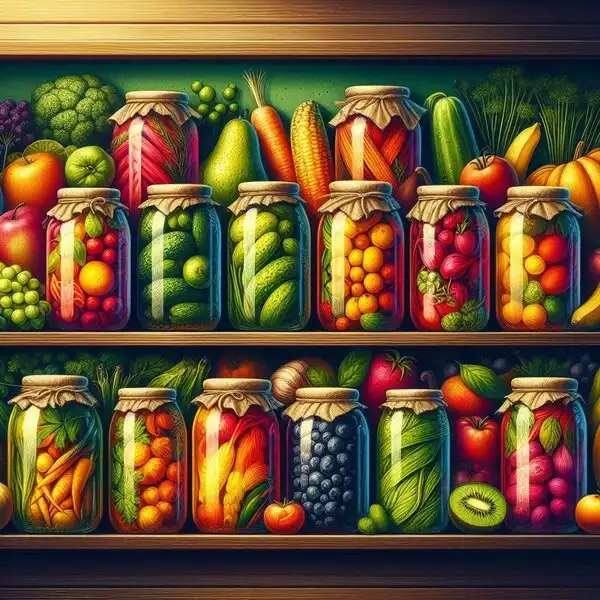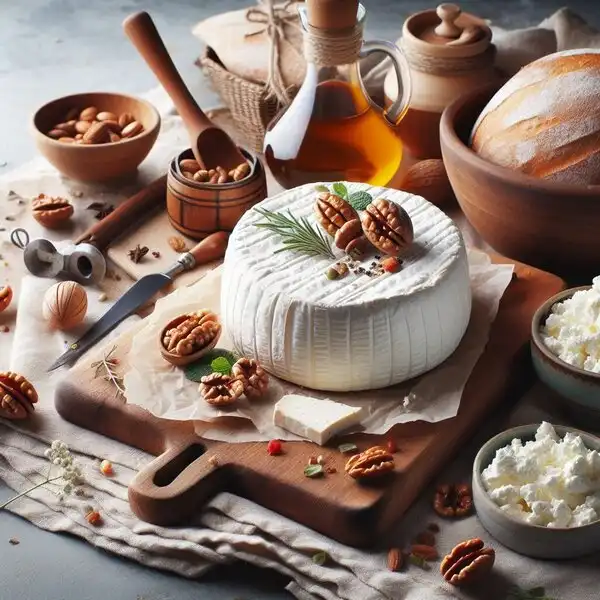Introduction: The Art of Homemade Cheese
Theres something undeniably charming about the process of making your own cheese. From the gentle curdling of milk to the satisfaction of slicing into a freshly made wheel, every step is a testament to the artistry and tradition of cheese-making. Among the myriad of cheese varieties, chevre stands out for its simplicity, versatility, and delightful flavor profile.
Unlocking the Versatility of Chevre Cheese
Chevre, derived from the French word for goat, is a soft, spreadable cheese traditionally made from goats milk. However, modern variations also utilize cows milk, offering flexibility to adapt the recipe based on availability and preference. This adaptability is one of the many reasons why we are enamored with chevre cheese.
The Appeal of Homemade Cheese
While store-bought cheese certainly has its merits, theres a unique allure to crafting your own dairy delights. Beyond the satisfaction of mastering a new culinary skill, homemade cheese allows for full control over ingredients, ensuring freshness and quality. By using fresh goats milk, sourced directly from the farm or a trusted supplier, you're not only elevating the taste of your cheese but also supporting local agriculture.

Embracing the Journey of Cheese-Making
Embarking on the journey of cheese-making is akin to a culinary adventure, with each batch offering an opportunity for experimentation and discovery. Whether youre a seasoned homesteader or a novice enthusiast, the process of transforming milk into cheese is a deeply rewarding endeavor. With a bit of patience, practice, and the right recipe, you can create a delectable wheel of chevre cheese right in your own kitchen.
Key Takeaways:
TIP: Use fresh, high-quality ingredients for the best flavor and nutritional value in your dishes.
- Chevre cheese offers a versatile canvas for culinary creativity, perfect for both savory and sweet applications.
- Making cheese at home allows for full control over ingredients, ensuring freshness and quality.
- Crafting chevre cheese is a journey worth embracing, offering opportunities for experimentation and culinary discovery.
In the following sections, we'll delve deeper into why we love this recipe, providing insights, tips, and serving suggestions to elevate your cheese-making experience.
Why We Love This Recipe: Exploring the Delights of Homemade Chevre Cheese
In the world of cheese-making, few recipes hold as much appeal as chevre cheese. This beloved delicacy, cherished for its creamy texture and tangy flavor, has captured the hearts of food enthusiasts and homesteaders alike. Let's delve into why we hold this recipe in such high regard.
A Personal Journey into Cheese-Making
At the heart of our love for this recipe lies a personal anecdote that embodies the spirit of culinary exploration. Abigail, our dedicated cheese-maker, embarked on a journey to perfect the art of chevre cheese after being inspired by the joys of dairy farming. Her unwavering commitment to mastering the craft has resulted in a recipe that embodies the essence of homemade goodness.
Flexibility and Customization
One of the most compelling aspects of this recipe is its versatility. Unlike store-bought cheeses, which often adhere to rigid flavor profiles, homemade chevre cheese invites experimentation and customization. By infusing the cheese with different herbs or spices, you can tailor its taste to suit your palate, creating a truly personalized culinary experience.
Serving Suggestions for Every Occasion
From casual gatherings to elegant soirées, chevre cheese shines as a versatile culinary companion. Its creamy consistency and bold flavor make it a perfect accompaniment to a variety of dishes and occasions. Whether spread on crackers for a quick snack, used as a decadent pizza topping, or incorporated into elegant desserts, chevre cheese adds a touch of sophistication to any culinary creation.
Key Takeaways:
- Our love for this recipe is rooted in a personal journey of culinary exploration and dedication.
- The flexibility of the recipe allows for endless customization, ensuring a unique cheese-making experience.
- Chevre cheese offers versatility in serving, making it suitable for a wide range of occasions and culinary creations.
In the subsequent sections, we'll provide a comprehensive guide to crafting your own batch of chevre cheese, complete with step-by-step instructions and helpful tips for success.
Our latest post on Understand homesteading secrets food storage natural remedies covers everything you need to know. From interesting facts to in-depth analysis, it’s the ultimate resource for anyone interested in this topic.
Step-by-Step Guide: Crafting Your Own Chevre Cheese
Now that we've explored the reasons behind our love for chevre cheese, it's time to roll up our sleeves and delve into the cheese-making process. Whether you're a seasoned cheese enthusiast or a curious beginner, this step-by-step guide will walk you through the process of creating your own batch of creamy, flavorful chevre cheese.
1. Gather Your Supplies and Ingredients
Before you begin, ensure you have all the necessary supplies and ingredients on hand. Here's what you'll need:
- Fresh Goat's Milk: The star ingredient of your chevre cheese. Opt for high-quality, fresh goat's milk for the best results.
- Cheese Cultures: Choose a cheese culture specifically designed for chevre cheese to kickstart the fermentation process.
- Cheese Salt: A non-iodized salt specifically formulated for cheese-making.
- Herbs and Spices (optional): If you're infusing your chevre cheese with flavor, select your preferred herbs and spices.
- Cheese Cloth: For straining the curds and whey.
- Cheese Molds: To shape and form your cheese.
2. Step-by-Step Instructions
Step 1: Heat the Milk
- In a large pot, gently heat the goat's milk to around 86°F (30°C). Use a thermometer to ensure accuracy.
Step 2: Add the Cheese Culture
- Once the milk reaches the desired temperature, sprinkle the cheese culture over the surface of the milk.
- Allow the culture to rehydrate for a few minutes before gently stirring it into the milk.
Step 3: Let the Milk Cultivate
- Cover the pot and let the milk sit at room temperature for approximately 12-24 hours, allowing the culture to ferment and the curds to form.
Step 4: Drain the Curds
- Line a colander with cheese cloth and carefully pour the cultured milk into the colander.
- Allow the whey to drain off, leaving behind the creamy curds.
Step 5: Season and Shape
- Transfer the drained curds to a mixing bowl and season with cheese salt and any desired herbs or spices.
- Gently mix the seasonings into the curds until evenly distributed.
- Spoon the seasoned curds into cheese molds, pressing gently to compact the cheese.
Step 6: Refrigerate and Age
- Place the cheese molds in the refrigerator and let the cheese set for at least 6-12 hours, allowing it to firm up.
- Once set, remove the cheese from the molds and transfer it to an airtight container.
- Store the cheese in the refrigerator and allow it to age for 1-2 days before enjoying.
3. Optional Variations and Tips
- Experiment with Flavors: Get creative with your chevre cheese by experimenting with different herbs, spices, and flavorings.
- Adjust Consistency: For a creamier texture, reduce the draining time of the curds. For a firmer cheese, drain for a longer period.
- Storage Tips: Store your chevre cheese in an airtight container in the refrigerator. It will continue to develop flavor over time.
Key Takeaways:
- Crafting chevre cheese at home is a simple yet rewarding process.
- Follow the step-by-step instructions carefully to achieve delicious results.
- Don't hesitate to experiment with flavors and techniques to customize your cheese-making experience.
In the next section, we'll wrap up our exploration of chevre cheese with a conclusion and call to action.
Our in-depth coverage on Insights into pressure canning chicken guide provides a wealth of information and insights. Be sure to check it out for a comprehensive understanding of the topic.
Find out everything you need to know about All about guide oxygen absorbers preservation in our detailed article. It's a valuable resource for anyone looking to learn more.
Conclusion and Call to Action:
As we conclude our journey into the delightful world of chevre cheese, we extend our heartfelt gratitude for joining us on this culinary adventure. From the humble beginnings of fresh goat's milk to the creamy indulgence of homemade cheese, we've explored the nuances and joys of cheese-making together.
Expressing Gratitude
We want to express our sincere appreciation for your interest in our chevre cheese recipe. Your enthusiasm fuels our passion for sharing the art of homesteading and self-sufficiency with others. Thank you for being a part of our community and embracing the spirit of culinary exploration.
Engage and Share
As you embark on your own cheese-making journey, we invite you to share your experiences with us. Whether you have questions, feedback, or simply want to showcase your creations, we welcome your contributions. Connect with us through the comments section below or reach out to us on social media.
Spread the Joy
Join us in spreading the joy of homemade cheese by sharing this recipe with friends, family, and fellow cheese enthusiasts. Together, we can inspire others to explore the rich and rewarding world of cheese-making, one batch of chevre cheese at a time.
Explore Further
For those eager to delve deeper into the realms of homesteading and self-sufficiency, we encourage you to explore our website for additional resources and content. From gardening tips to herbal remedies, there's a wealth of knowledge waiting to be discovered.
Key Takeaways:
- We are grateful for your interest and participation in our cheese-making journey.
- Share your experiences and creations with us through comments and social media.
- Help us spread the joy of homemade cheese by sharing this recipe with others.
- Explore our website for more homesteading and self-sufficiency resources and content.
As we bid farewell for now, we look forward to the continued exchange of ideas, inspiration, and camaraderie within our community. Until next time, happy cheese-making!

 Emma
Emma

